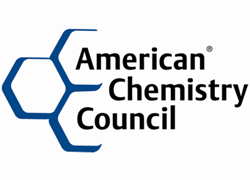The ongoing implementation of Toxic Substances Control Act reform is an opportunity for the chemical industry to continue its “strong and constructive” relationship with the Environmental Protection Agency and other stakeholders while ensuring that a scientifically sound, risk-based approach is the backbone of chemical regulation, said Cal Dooley at the American Chemistry Council’s GlobalChem event in Washington, D.C., on Thursday.
The importance of transparent regulatory processes based on sound science and risk-based assessments were common themes Thursday, with speakers including Dooley, ACC’s CEO and president; Michael Honeycutt, chairman of EPA’s Scientific Advisory Board; and Jeff Morris, head of EPA’s Office of Pollution Prevention and Toxics, highlighting these areas during their morning presentations.
Dooley opened by noting the bipartisan nature of TSCA reform, as Democrats and Republicans, industry and nongovernmental organizations all came together to make it happen. However, the past couple of years have seen an increasingly polarized political environment, which he said not only would make such legislation as TSCA reform difficult today but has also led to unfair criticism of TSCA implementation, EPA’s Scientific Advisory Board and ACC.
Despite this, he said, ACC has insisted “on taking an intellectually consistent, science-based approach to the implementation of TSCA. We are not deviating in any way in terms of what we committed to do when we committed to working with members of Congress on both sides of the aisle.”
To that end, he said, ACC is, as it has been, “totally committed to a strong and constructive relationship” with EPA, which includes the relationship with Administrator Scott Pruitt.
In meetings with Pruitt and staffers, “he fully understands the problem and challenge he’s dealing with, he tries to define what is the outcome and decision that EPA needs to make, and he tasks his staff to go to work and make those decision findings certain,” Dooley said.
This is particularly important, Dooley said, with the tight and numerous timelines that the TSCA law demands of EPA.
As for criticisms of changes at EPA’s Scientific Advisory Board during the Trump administration, Dooley acknowledged that personnel changes have occurred but argued against such changes being a bad thing. A wider range of members means a diversity of expertise and experiences, including those of industry experts, and will contribute over time to “better scientific outcomes,” Dooley said.
SAB Chairman Honeycutt touched on this point during his later presentation, noting that he counted 24 of the 44 SAB members as academia, with only five from industry.
“Our industry and, I think, all constituents really benefit when we have a credible approach to ensuring that we’re implementing the best available science and making determinations on how we can best protect our environment, as well as consumer safety, but do so in a manner which is balanced and appropriate,” Dooley said while praising Honeycutt’s selection as SAB chair.
What’s next?
Dooley mentioned that ACC members are noting the need to improve how TSCA’s Section 5 operates, to implement it in a way “that does not stifle innovation in our section,” while expressing confidence in Pruitt and his staff’s commitment and hard work.
But Dooley encouraged the audience to look beyond EPA and TSCA. “There is an opportunity, with strong leadership in the administration, to ensure that we are developing the gold standard in scientific risk assessments,” Dooley said. “That is, expand it not just to EPA, but to FDA, to Department of Labor — with their occupational exposures — to ensuring that we are using the best available and scientific protocols and methodologies and some of the new emerging technologies” to make decisions based on sound science.
